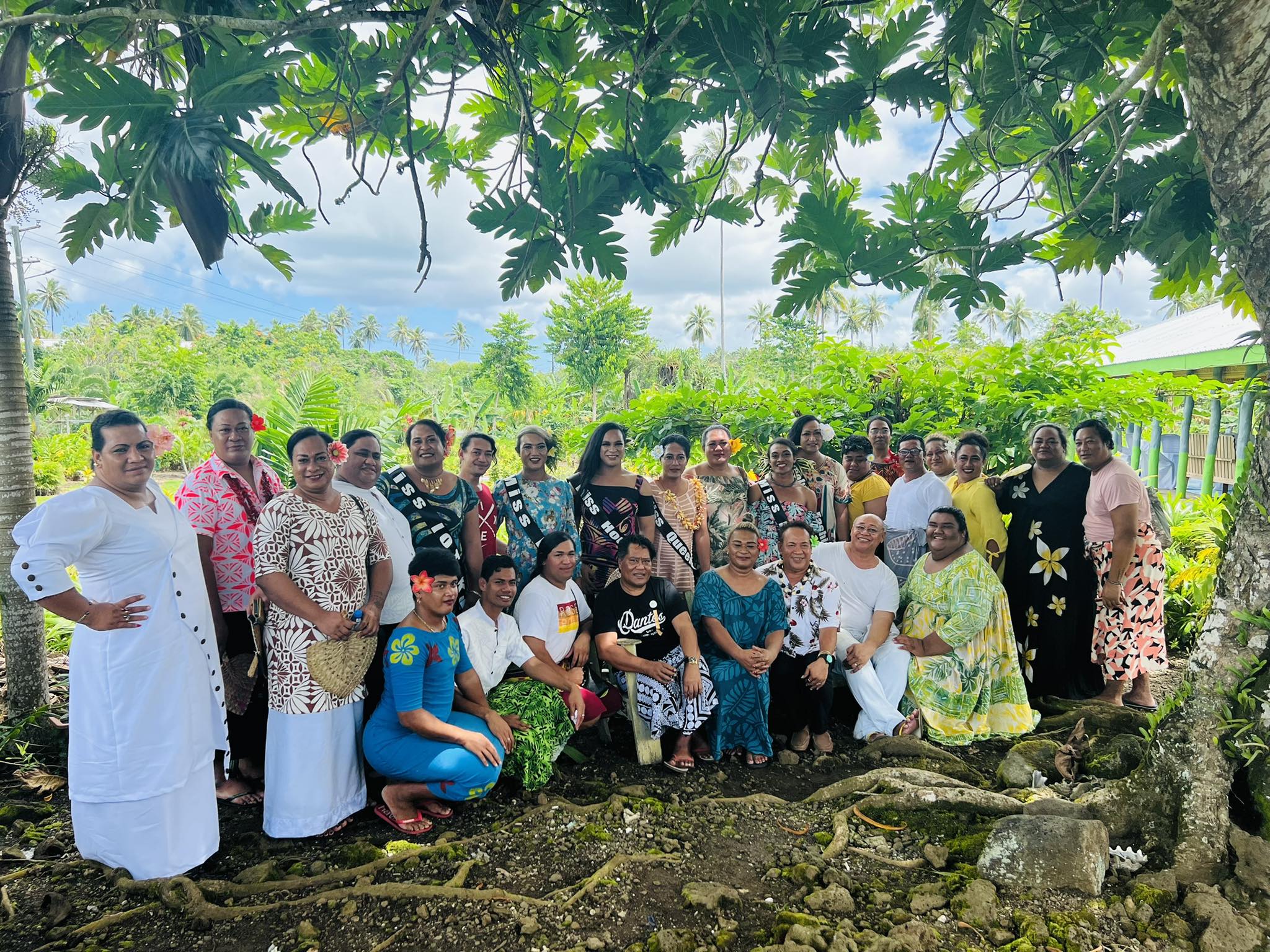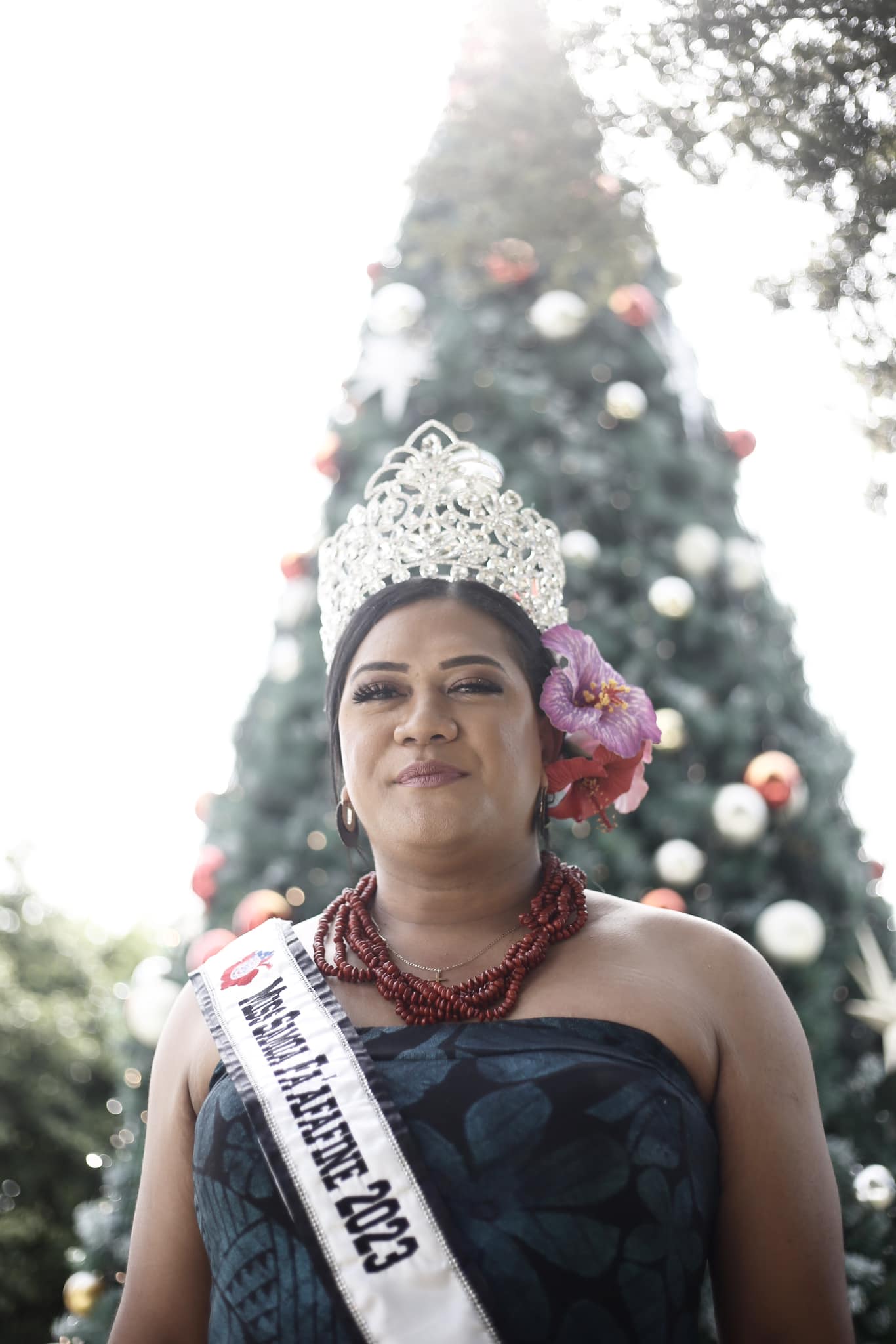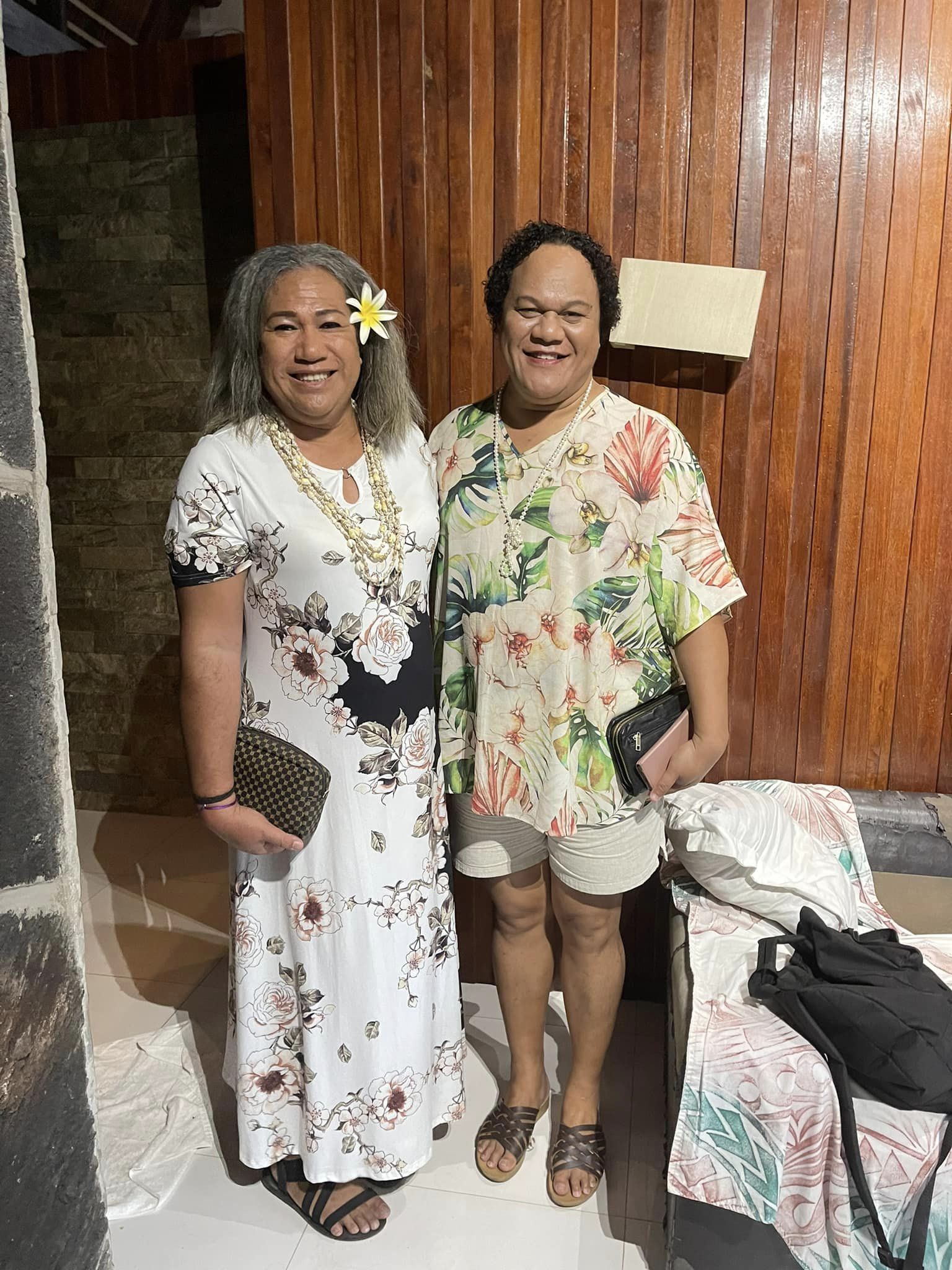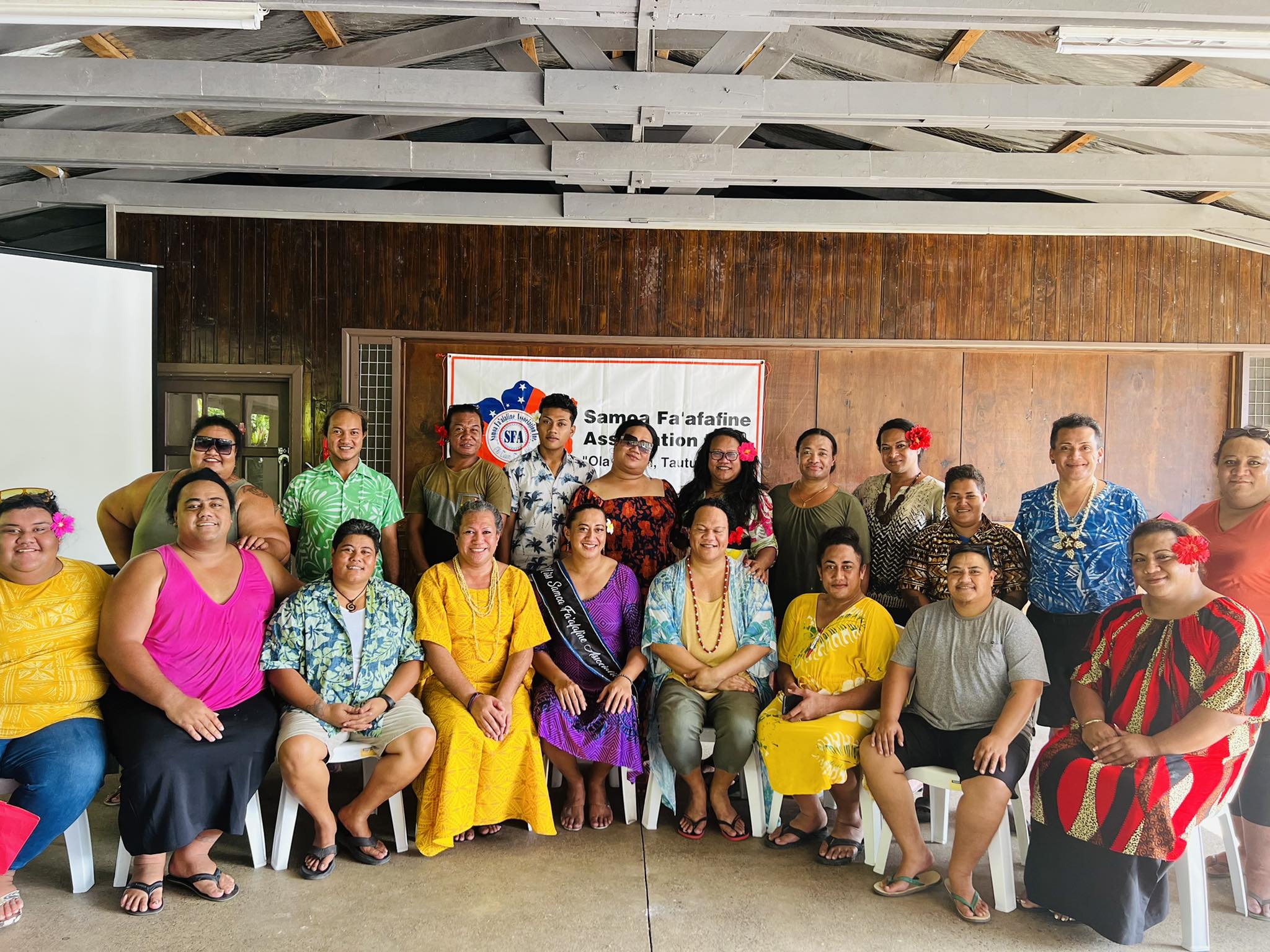Fa’afafines: The Heart of the Samoan Community

Photo (c) Samoa Fa’afafine Association, Special Permission Granted By Photographer
“When you hear a big laugh coming from somewhere, you can be pretty sure that fafas are doing some comedy stuff. If you see a house with a nice garden, everything is neat outside, you’re pretty sure there’s a fafa living there. When you go to church, they arrange the flowers and make sure that their best is given to the decorations.”
Fa’afafine participant Sandy on the presence of fa’afafines in Samoan society, stated in Kanemasu and Liki’s study on fa’afafines’ navigation of gender in contemporary Samoan culture [1].
While fa’a means “in the manner of”, fafine means “woman”. These two come together to create the word fa’afafine (pronounced fa-a-fafee-nay), which refers to a non-binary gender identity for male-assigned Samoans who typically behave femininely. Although most fa’afafines dress femininely, such as wearing a puletasi, a traditional outfit for Samoan women, there are variations in the degree of femininity and masculinity expressed by fa’afafines. Some present femininely every day while others dress femininely once in a while [2]. As stated by a fa’afafine participant in Kanemasu and Liki’s study on fa’afafines’ navigation of gender in contemporary Samoan culture:
“When I go to work, I just wear normal – no make-up. But when I go out, I wear make-up, do a dress, high heels, earrings. Then you see me different – the real one [laughs]” [1].
In contrast, some may prefer to look more androgynous or masculine altogether. Similarly, some fa’afafines understand their gender identity as being both masculine and feminine [2].

Photo (c) Samoa Fa’afafine Association, Special Permission Granted By Photographer
Fa’afafines recognize their femininity early in their childhood [2]. They are also likely to have preferences towards typical girl activities, like playing with other girls, and a dislike towards typical boy activities, such as rough-and-tumble play, as children [2,3]. While some families may physically punish fa’afafine children for their femininity, some families are neutral about this matter [3]. Some parents may even encourage their fa’afafines’ femininity in childhood [2,3].
As children, fa’afafines also help with household chores typically taken on by Samoan women, such as washing, cooking, and cleaning. As adults, fa’afafines will continue these social roles to also include caretaking tasks like care for children, parents, and other family members [2]. As caretakers of their families, fa’afafines also show higher levels of concern for the well-being of their nieces and nephews compared to other Samoan men and women, with heightened concern for family and relatives starting in childhood [4,5]. This phenomenon may be explained by the kin selection hypothesis, which suggests that male-assigned individuals who are attracted to men help with their family’s reproduction and offspring health in order to pass on genes they share with other family members [5].

Photo (c) Samoa Fa’afafine Association, Special Permission Granted By Photographer
Fa’afafines value the concept of fa’asamoa (Samoan way of life), which stresses the importance of the community’s well-being over one’s own. As a result, fa’afafines are heavily involved in tautua (service) to their communities, family, and/or church. In return, fa’afafines are respected and recognized in Samoa. As described by a fa’afafine participant in Kanemasu and Liki’s study:
“Our money from the pageant, we’ll give it for the old people. It’s fundraising. And disabled kids. That’s where our money is going to. Heaps of people in Samoa support fa’afafines because we are doing the right thing. That’s why the Prime Minister likes us” [1].

Photo (c) Samoa Fa’afafine Association, Special Permission Granted By Photographer
Despite this, fa’afafines do experience discrimination from Samoan society [1,2]. While most churches are accepting of fa’afafines, some churches do not. Thus, some fa’afafines either refuse or are forced by family to go to church. Other examples of discrimination towards fa’afafines include social and physical punishment for feminine appearances, verbal abuse, shame from relationship partners, bullying at school, and some discriminatory traditional Samoan cultural norms. Due to fa’asamoa, some fa’afafines will accept this discrimination and its negative impact on their own well-being for the sake of tradition and some acceptance. Jordan, a fa’afafine interviewed by Kanemasu and Liki, describes this approach to discrimination:
"Don’t counter. This is what we say. We do not have to counter the ancient Samoan cultural rules that may have discriminated against fa’afafines. Do not counter that by using a Westernised approach. Use our own culturally appropriate approach, because it will be a lot more easily accepted" [1].

Photo (c) Samoa Fa’afafine Association, Special Permission Granted By Photographer
With a culture of both acceptance and discrimination, fa’afafines advocate for acceptance and tolerance within Samoan society and tradition. For example, in 2013, criminalization of “female impersonation” from male-assigned individuals was repealed, which was greatly due to active political involvement from the Samoa Fa’afafine Association (SFA) [1]. The Samoa Fa’afafine Association also extends its membership and advocacy to fa’afatamas, Samoans (assigned female at birth) who identify as men or behave in a masculine way [1,6].
[1] Kanemasu, Y., & Liki, A. (2021). ‘Let fa’afafine shine like diamonds’: Balancing accommodation, negotiation and resistance in gender-nonconforming Samoans’ counter-hegemony. Journal of Sociology, 57(4), 806-824. https://doi.org/10.1177/1440783320964538
[2] Rana, V., & Balsam, K. (2021). Fa’afafines. In The SAGE Encyclopedia of Trans Studies (Vol. 2, pp. 245-247). SAGE Publications, Inc., https://doi.org/10.4135/9781544393858
[3] Vasey, P. L., & VanderLaan, D. P. (2021). Fa’afafine. In Encyclopedia of Evolutionary Psychological Science (pp. 2875–2876). Springer International Publishing. https://doi.org/10.1007/978-3-319-19650-3_46
[4] Semenyna, S. W., & Vasey, P. L. (2019). Striving for prestige in Samoa: A comparison of men, women, and fa’afafine. Journal of Homosexuality, 66(11), 1535–1545. https://doi.org/10.1080/00918369.2018.1503461
[5] VanderLaan, D. P., Petterson, L. J., & Vasey, P. L. (2017). Elevated kin-directed altruism emerges in childhood and is linked to feminine gender expression in Samoan fa’afafine: A retrospective study. Archives of Sexual Behavior [, 46(1), 95–108. https://doi.org/10.1007/s10508-016-0884-2
[6] Kanemasu, Y., & Liki, A. (2023). Weaving “culture” and political advocacy in a small island nation: Samoa Fa’afafine Association and non-heteronormative Samoans. In Handbook of Civil Society and Social Movements in Small States (1st ed., pp. 139). Routledge. https://doi.org/10.4324/9781003341536-12
Australia’s fa’afafine community is growing, and they want their voices heard | ABC News by ABC News Australia
‘It’s part of our culture’: Being fa’afafine in Hawke’s Bay by Re: News
Fa’afafine: the widely accepted third gender in Samoa by South China Morning Post
Beyond Gender: Indigenous Perspectives, Fa’afafine and Fa’afatama by National History Museum of Los Angeles County
Watch the video below to learn more!
Through conversation with Dr. Scott Semenyna, an Assistant Professor at Stetson University, learn more about evolutionary and social psychology research on the fa’afafines, their experiences of discrimination and acceptance within Samoan society, and another Samoan gender-diverse category, the fa’afatama.
